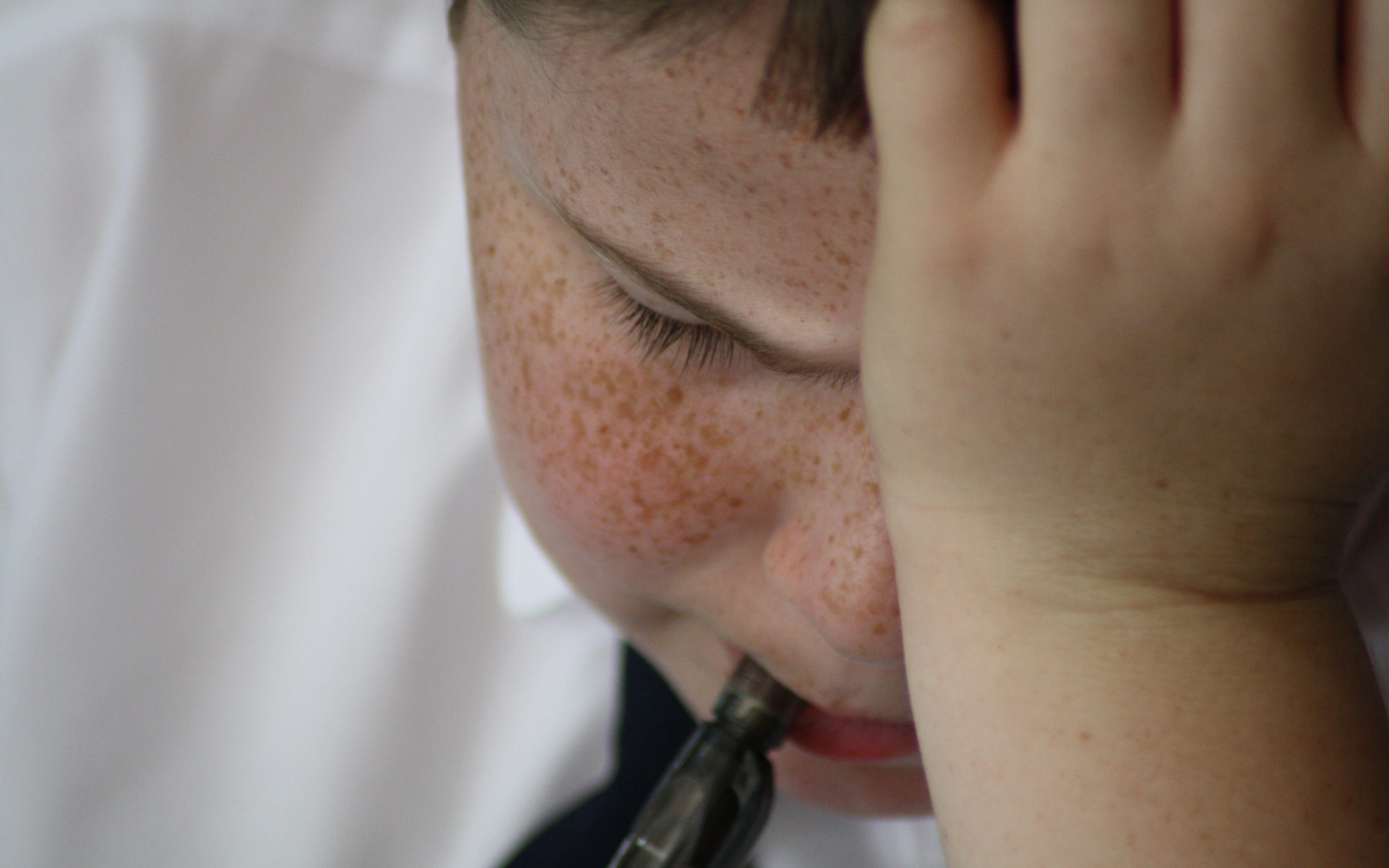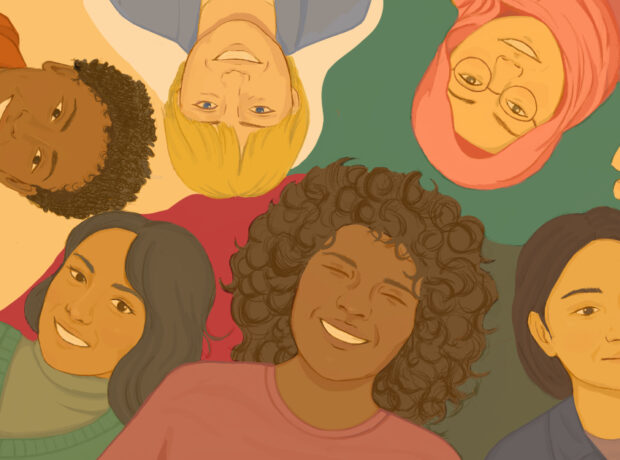Our 17-year-old writer interviews a GCSE student who suffered severe exam stress and investigates how the UK’s education system is making children ill.
Rose Mudie is the joint winner of the University of Warwick’s third annual Writing Wrongs Schools’ Competition, organised by the Centre for Human Rights in Practice. This is her winning feature which she reworked during her internship with Lacuna Magazine.
Lily* is a smiley 16-year-old with a mouth full of braces. While we spoke, her fingers ripped little pieces of skin off from the sides of her thumbs, leaving them bleeding and raw.
Besides that, she kept her anxieties under cover.
When Lily was 12 she developed an eating disorder.
She counted the calories on the sides of packets and drank only Diet Coke to keep her energy up.
After a few months of struggling, her parents forced her to see her local GP who put her on a waiting list for Child and Adolescent Mental Health Services (CAMHS).
Lily was told they would help her and her family. Her doctor said that she would be ok again. So she waited for the letter through the post for her first appointment. Just over a year later that letter finally came.
Lily was dangerously underweight and was beginning to become obsessive over her routine – she was brushing her hair from 06:59 to 07:01, eating breakfast at 07:09 for precisely 11 minutes and then washing her face in the bathroom for the following 5.5 minutes.
Driving hours to the hospital, she was consulted and then diagnosed with numerous issues.
As she lists them she has to count them out on her fingers to remember all of them: generalised anxiety, severe depression, OCD, systematic depersonalisation and suicidal tendencies. After four more months of waiting Lily started Cognitive Behaviour Therapy (CBT), leaving school each week for a one-hour meeting with her therapist.
However she soon fell into the darkest period of her life.
Her school amplified the pressure on her and other students due to the looming GCSEs and she tried to stay strong. “I just crumbled” she said, “I fell apart.”
What followed this breakdown was a period of self-harming and multiple suicide attempts that Lily still can’t bring herself to recount in detail.
She was too ashamed to ask for support from her friends or teachers due to the heavy stigma that surrounds the issue of mental health and her fear of being judged and alienated. Her psychiatrist told her mother that Lily needed to be immediately hospitalised and that she was a danger to herself.
They called the local ward and informed them that Lily would be moving there immediately; they replied that she couldn’t. There were no free beds.
So Lily and her mother were sent home with no support.
The 15-year-old was locked away like a criminal in her own house for two months.
“I wasn’t allowed to be on my own,” she says. “My mother bought a safe; all the razors and knives and ropes and cords and pills were locked away. My parents hid the door keys from me. They stood in the bathroom whilst I showered. I wasn’t allowed to shut my bedroom door, just in case…”
She would often sit and hear her parents crying at night in the living room under the stress of trying to keep her safe.
In five months, Lily never missed her weekly appointment… apart from the time that she had starved herself so badly that she was too weak to get out of bed.
In time, with the help of her family and psychiatrist, Lily was able to pull through.
She took her exams even though her teachers had to sit by her side in case she ran away again.
Her muscle wasted away leaving her knees and elbows poking out from underneath her pale skin. Her hair fell dead around her face.
Too scared to tell her friends the reason why she had been away, Lily told them that she had received tutoring after her parents asked the school for more academic help. Even now, a year later, they still believe the lie.
Picking at her sore thin thumbs, Lily says not everyone is as lucky as her.
Another student at her school had taken their life the year before the beginning of Lily’s struggle.
The school did a 15-minute assembly on the impact of stress and placed a photo of the pupil in the hallway and then moved on.

Photo by Louis Bauer
The story of Lily’s school is not an uncommon one. Every day an equivalent of 183 schools seek professional help from CAMHS for a student dealing with a mental health issue.
According to child and adolescent mental health charity Young Minds rates of anxiety and depression in teenagers have increased by 70% over the past 25 years, while Childline reports a 36% increase in the number of young people calling about mental health problems in just the last four years.
The sharp increase in numbers of young people referred to specialist mental health services has come about at the same time as major changes to the school system between 2010 and 2014 under the education secretary Michael Gove.
Reducing the importance of coursework, raising attainment levels by replacing the eight A*-to-G grades with 9-to-1 grades, and returning to an outdated system of memorising texts and quotes is placing more pressure on end-of-year exams rather than spreading it evenly across the two-year period. With 80% of young people like Lily saying that exam pressure has significantly impacted their mental health, these changes are being felt.

Former Conservative education secretary Michael Gove by Policy Exchange
It is also notable that in the current Ofsted inspection framework there are fewer references to health and wellbeing than there were a decade ago.
Mary Bousted, joint leader of the National Education Union (NEU), said recently: “Today’s state school educated children… are encouraged by the system itself to believe that the sum of their value lies in their exam performance.”
Often schools refuse to admit their pupils are struggling with mental health issues due to fear of losing position in the league tables or being marked down by both Ofsted and parents of future pupils.
This can lead to pupils being told that they do not have a severe enough issue or not getting the help that they desperately need.
Another NEU member said:
“I have several students who were high achievers at GCSE, and who are virtually unable to sit in a lesson and concentrate due to severe stress”.
Teachers are also under increasing levels of pressure, causing many to defer from the profession or seek medical assistance; from April 2017 to March 2018, the number of teachers seeking mental health support increased by 35%.
Research commissioned by the charity Education Support Partnership, indicated “75% of teaching staff in schools and colleges experienced symptoms stemming from their work”.
The government recently responded in a green paper stating they are “actively addressing the issues that teachers cite as reasons for leaving the profession, for example by supporting schools to reduce unnecessary workload”.
But the NEU stresses that the number of unfilled teaching positions increased from 2,228 places in 2015/2016 to 4,000 in 2017/2018.

Image by Pedro Figueras
Mental health practitioners are also under pressure. Since 2010 funding for UK mental health services (including CAMHS) has dropped by £50 million.
Government proposals to trial new four-week waiting times for CAMHS have been labelled as “failing a generation” because the pilot won’t be rolled out until the end of 2022 and, even then, will only apply to somewhere between one-fifth and one-quarter of the country.
Right now, the average wait for a first appointment with CAMHS stands at 26 weeks (and 42 weeks until the start of treatment), but some children, like Lily, are waiting more than a year.
Despite this, in the green paper proposing the trial, secretary of state for education Damian Hinds and secretary of state for health and social care Matt Hancock stated: “After being the first government to introduce waiting times standards for mental health, we are on track to meet, or are exceeding, our standards for children and young people.”
It has now fallen to small independent companies and charities in the voluntary sector to try and protect these children.
Organisations like Time2Talk and Place2Be have launched in recent years with their main aim being to both reduce stigma and highlight the importance of mental health support.
Place2Be is a national charity that provides emotional support to children. After being founded in 1994 it began working with local schools; expanding to 28 primary schools in 1999. However, as of 2018 they work with over 282 schools as well as providing training services for teachers.
NHS watchdog the Care Quality Commission last year rated 39% of all specialist CAMHS as requiring improvement. When CAMHS staff were asked in a survey by the Association of Child Psychotherapists whether they were able to see any evidence of the government’s promise to create “one of the biggest expansion services in Europe,” 93% of respondents said they were not.
As thousands of teenagers around the country collect their results this week, and another new marking system is introduced for next year’s students, when will we commit to reducing exam pressure and protecting the wellbeing of children like Lily?
Main image by Megan Skelly
*Lily’s name has been changed.
READ MORE: A teenager describes how it feels to have an anxiety attack
- For content like this direct to your inbox, subscribe here.



